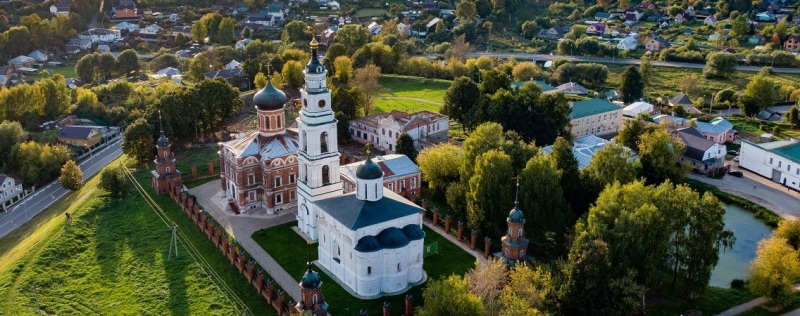
In the Moscow region, not many Kremlins have been preserved in their original form. From former fortresses, often only earthen ramparts and fragments of walls remain. However, these places attract travelers like a magnet and are in demand as ideal locations for a weekend trip. We talk about the main Kremlins of the Moscow region and why they are interesting.
Kolomna Kremlin: first among equals
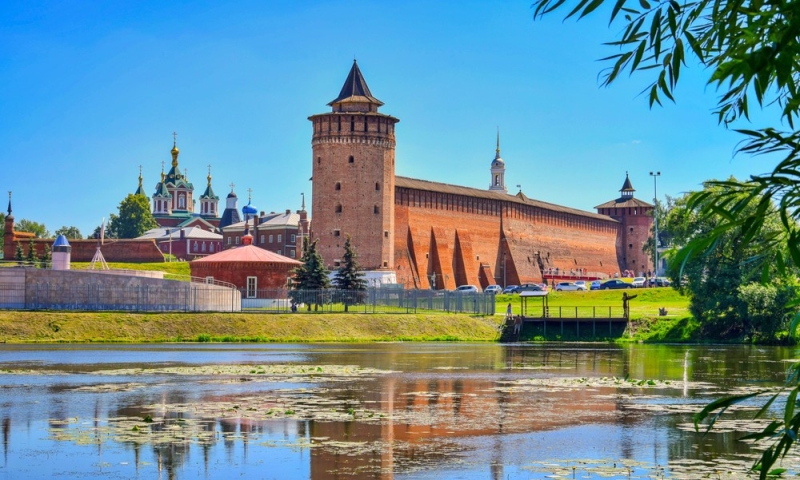
How to get there: There are electric trains from Moscow. Ticket price – from 360 rubles*, travel time – about 2-2.5 hours.
The Kolomna Kremlin is perhaps the most famous fortress in the region, annually gathering around it fans of antiquity. It has been known since the 16th century and gained fame as a powerful defensive structure. The Kremlin is located at the confluence of two rivers – the Kolomenka and the Moskva River, which here also flows into the Oka. All of modern Kolomna is essentially surrounded by them on three sides. Therefore, it is not surprising that the place was chosen to protect the southern borders of the Moscow principality from the raids of nomads.
Not much remains of the fortress’s former appearance. Local residents dismantled part of the structure for personal needs about 200 years ago. Currently, only 7 of the 17 towers and two sections of the wall on the south side have survived. But even from the remains one can easily imagine the previous scale: they rise 20-30 m above visitors. A legend is associated with one of the towers: according to legend, during the Time of Troubles, Marina Mnishek, the wife of two impostors at once, was imprisoned in it and ended her days Russian throne: False Dmitry I and False Dmitry II.
In fact, the entire territory of the Kremlin is a city block and a place of attraction for those who like to relax in the historical center of the city. Entry here is free and open to everyone. There are many temples, souvenir shops, museums and cafes on the territory. At the Pyatnitsky Gate there is a museum-bakery “Kalachnaya”, where you can try baked goods prepared according to ancient recipes.
Where to stay:
- Hotel “Sovetskaya” (rating 8.3) – from 1,900 rubles per night*.
- Landing stage of the recreation center “Master” (rating 8.6) – from 2,000 rubles per night*.
- “40th Meridian Arbat” (score 9.9) – from 3,800 rubles per day*.
Serpukhov Kremlin: “horses and people mixed together…”
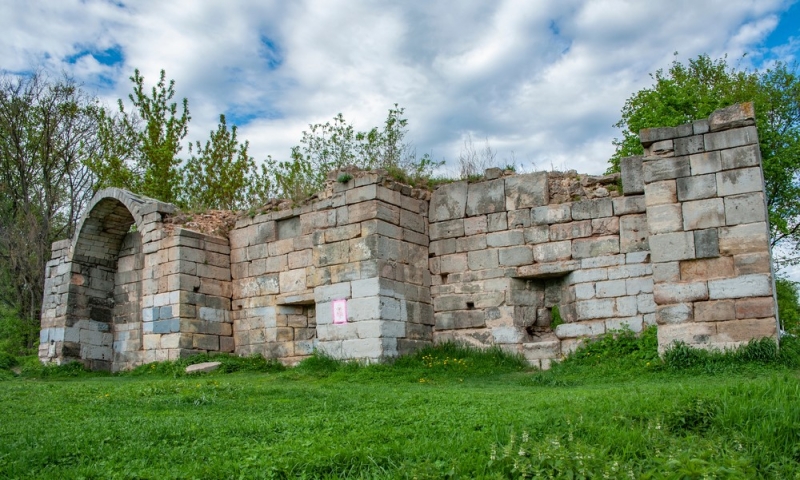
How to get there: There are electric trains from Moscow. Ticket price – from 330 rubles*, travel time – about 2 hours.
The stone Kremlin in Serpukhov was built at the same time as in Kolomna, on the site of an even older wooden one. It was located on Cathedral Hill, which still towers in the center of the city. From its observation deck there is a canonical view of three churches – the Assumption, Elias and Trinity churches. This landscape became the hallmark of Serpukhov.
From the medieval fortress itself, only small fragments of walls and foundations remain, but the place is atmospheric. On its territory there are residential one-story buildings: people literally live in the Kremlin. The same age as the unpreserved fortress, the Trinity Cathedral, is also located here. And horses also graze nearby: there is an equestrian club on the territory of the Kremlin. You can see what the Kremlin used to be like in the paintings of local artist and local historian Nikolai Burdykin.
Where to stay:
- Park Hotel “4 Seasons” (rating 8.4) – from 4,900 rubles per night*.
- “Korston” (rating 9.7) – from 5,500 rubles per night*.
- Park Hotel “Vozdvizhenskoye” (score 10) – from 10,000 rubles per night*.
Zaraisky Kremlin: a perfectionist’s paradise
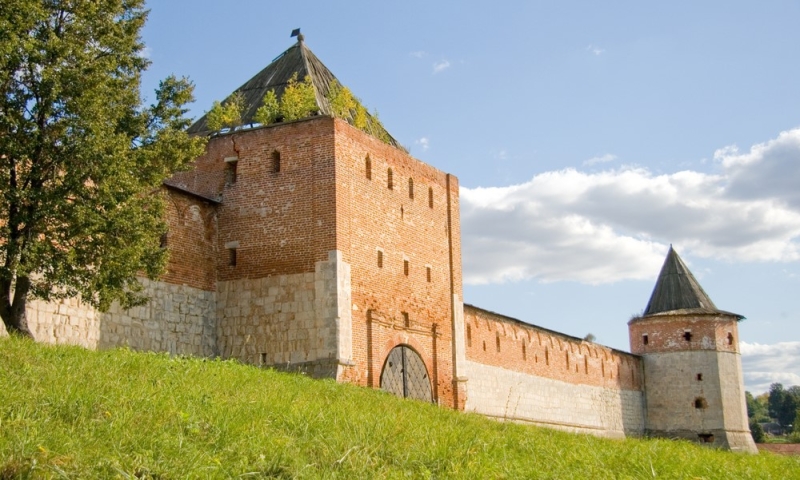
How to get there: from Moscow (Kotelniki metro station) there is bus number 330. Ticket price – from 465 rubles*, travel time is 2.5 hours without traffic jams. Only freight trains travel by rail to Zaraysk. Alternatively, you can take the train from Moscow to the Lukhovitsy railway station, and from there transfer to bus No. 24 or No. 31.
This is one of the best preserved Kremlins in the Moscow region and one of the smallest in the whole country. The total length of the walls barely exceeds 600 m. Despite this, since its construction in the 16th century it was considered a very powerful and impregnable fortress. Just like the Kolomna Kremlin, Zaraisky left a mark on the history of the country during the Time of Troubles: at that time the governor here was Prince Dmitry Pozharsky, who, together with the merchant Kuzma Minin, liberated Moscow from the Polish intervention.
The fortress itself is now an even rectangle with 7 towers. The territory has a lawn and trees planted, and because of this it looks like a cozy city square. Admission here is free, but you need to buy tickets to visit the museum’s exhibition or climb the wall. In addition to the building of the former religious school, in which the museum is located, there are also two cathedrals on the territory. And here there is a monument to the Ryazan prince Fedor and his family, who tragically died during the Tatar-Mongol invasion.
Where to stay:
- In Ryazan Greenfeel (score 9.9) – from 1,600 rubles per day*.
- In Lukhovitsy “Harmony” (score 9) – from 3,300 rubles per day*.
- In Kolomna “Hotel Kolomna” (rating 8.9) – from 3,700 rubles per night*.
Dmitrov Kremlin: not a sleepy hollow
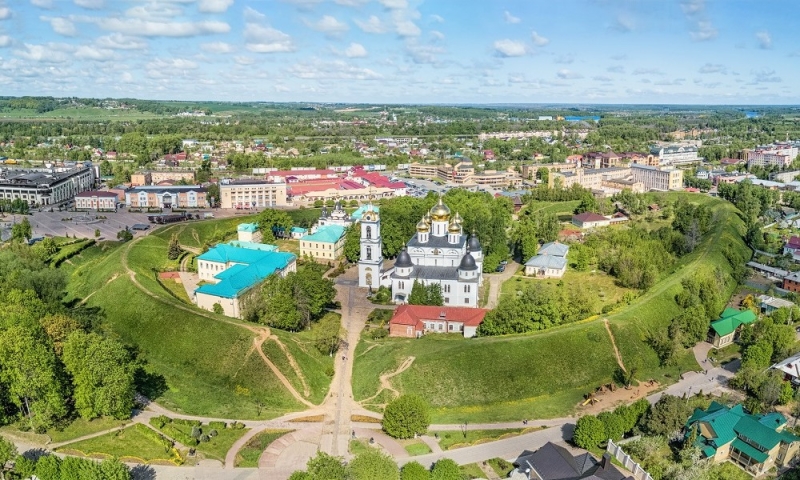
How to get there:from Moscow by train. Ticket price – from 210 rubles*, travel time will be about 1.5 hours.
As a rule, in medieval Rus’, kremlins were initially built of wood, and stone walls appeared much later. Some remained wooden forever. Dmitrovsky is just one of those. It was built in the 12th century by Prince Yuri Dolgoruky and named in honor of his son Vsevolod the Big Nest (baptized Dmitry). Due to the fact that wood is a short-lived material, nothing has survived from the previous defensive structures.
The territory of the Kremlin is surrounded by a rampart and is located, as it were, in a ravine. There are three entrances, at one of which there is a wooden Nikolsky Gate – a new build, erected in 2004 on the site where the old ones stood. You can climb the rampart and walk along the top around the Kremlin.
The Kremlin territory itself is small and located in the city center. A church, an old prison, a functioning gymnasium and other historical objects are compactly located on it.
The Dmitrov Kremlin Museum-Reserve includes the house of the anarchist and geographer Peter Kropotkin located outside it, as well as a local history museum with a fairly large collection of exhibits for such a small city. To visit the complex you can take a single ticket.
Where to stay:
- “Paris on Shkolnaya” (rating 8.9) – from 2,200 rubles per day*.
- “Princess Frog” (rating 8.8) – from 4,700 rubles per day*.
- “Four Crowns” (rating 8.2) – from 3,700 rubles per day*.
Mozhaisk Kremlin: a model instead of a fortress
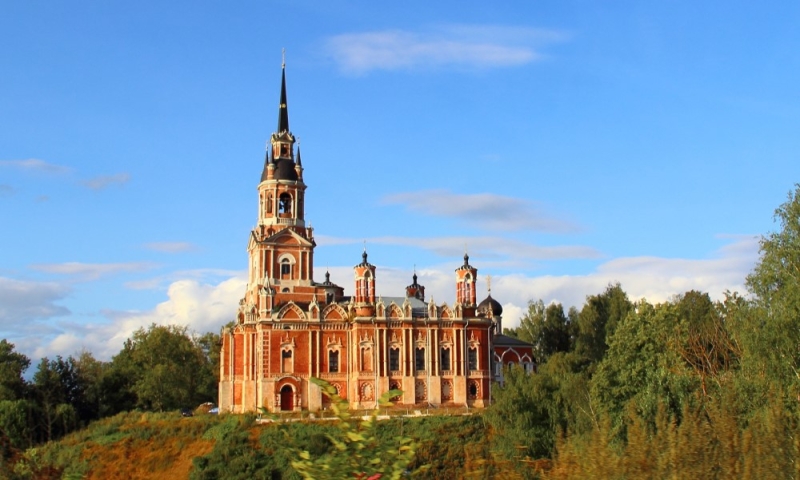
How to get there: from Moscow by train. Ticket price – from 360 rubles*, travel time – about 2 hours.
The Mozhaisk Kremlin was once the western outpost of the Moscow princes: the wooden structure was replaced in ancient times with a white stone one. However, only fragments of towers and walls have survived to this day. A model of the Kremlin allows you to see what the fortress used to be like: it is located here in the open air and was made by the headman of the local temple.
The Kremlin territory is a hill, on top of which rises the Novo-Nikolsky Cathedral, built in the 19th century. Part of the remaining wall and the ancient Kremlin gates were literally built into the church. The temple next door, although less attractive to tourists due to its small size, is at the same time an order of magnitude older than its neighbor: it was built back in the 14th century. And from the observation deck not far from them, landscapes with valleys and hills lined with private residential buildings open up.
Where to stay:
- Park Hotel “Krasnovidovo” (rating 9.9) – from 3,800 rubles per night*.
- Creative community “Village” (score 9.8) – from 5,000 rubles per day*.
- Recreation center “Mozhaisk Primorye” (score 10) – from 10,000 rubles per day*.
Zvenigorod Kremlin: when you are not quite the Kremlin
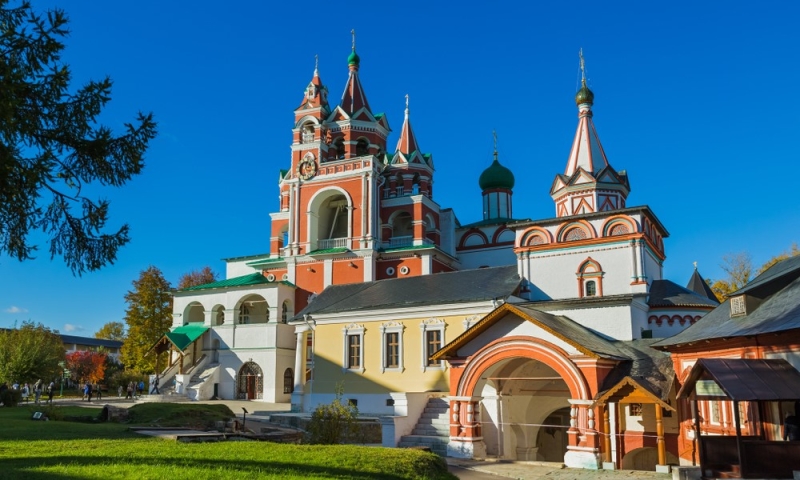
How to get there: from Moscow by train. Ticket price – from 210 rubles*, travel time – about 1.5 hours.
When hearing the word “Kremlin”, many immediately imagine fortress walls with towers or at least the old historical center of the city. But the same cannot be said about Zvenigorod: not only are only the ramparts of the local Kremlin preserved, but it is located almost on the outskirts of the modern city. The area is even officially called not “Kremlin”, but “town”. There have been settlements here since ancient times, but the mention of the fortress dates back to the 14th century: it was wooden and therefore has not survived to this day.
True, all this does not prevent tourists from coming here to admire the local “non-Kremlin”. The whole secret is that you can get to it along a path that runs through a dense coniferous and deciduous forest, and for its picturesque views Zvenigorod has long been called nothing less than “Switzerland near Moscow”. In addition, on the territory of the “town” there is the Assumption Cathedral – the paintings that have been preserved in the temple are attributed to the authorship of the most famous Russian icon painters Andrei Rublev and Daniil Cherny. A couple of kilometers from the town is the beautiful Savvino-Storozhevsky Monastery – a favorite place of pilgrimage for Russian tsars. At the same time, at one time it even served as a Kremlin and was a military outpost.
Where to stay:
- Hostel “Dachnaya Residence” (score 7) – from 1,900 rubles per night*.
- “OK-Reka” (score 9.3) – from 5,400 rubles per day*.
- Park Hotel “Zvenigorod” (rating 9.9) – from 9,900 rubles per night*.
Volokolamsk Kremlin: a fence instead of walls
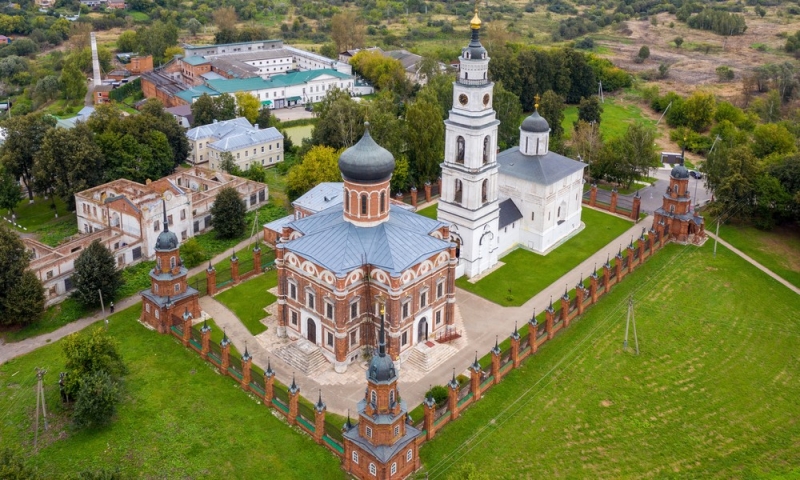
How to get there: from Moscow by train. Ticket price – from 420 rubles*, travel time – about 3 hours.
The local Kremlin is essentially an ensemble of two churches, as well as a bell tower with an observation deck. All buildings are located on a hill in the center of Volokolamsk. The city is considered the oldest in the region and has been mentioned in chronicles since 1135 – earlier than Moscow itself. It was an important trading post: merchants transported their ships by portage from the nearby Lama River, hence the name.
The fortress walls of the Kremlin were destroyed several times in ancient times and have not survived to this day. Now the territory is fenced with a beautiful openwork fence of the early 20th century: brick columns are installed along it, and there are turrets in the corners. In one of the churches, St. Nicholas Cathedral, there is a museum containing exhibits introducing the history of the city. Entrance to the territory itself is free; you need to buy a ticket to the museum and observation deck.
Where to stay:
- Hotel “Pshenichnikov” – from 3,300 rubles per night*.
- Hotel “Nikol” (score 9) – from 4,400 rubles per night*.
- “Comfort motel” – from 5,500 rubles per night*.
*Prices are current at the time of publication.

